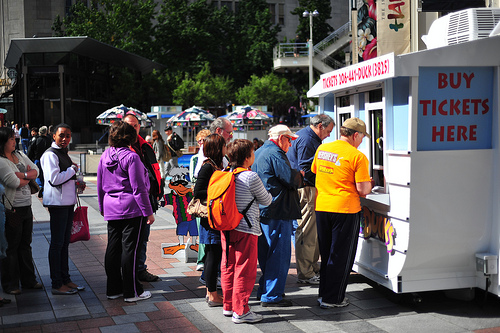 This is a question that comes up frequently in the community world.
This is a question that comes up frequently in the community world.
As more and more people are embracing a career in community building, the question is inevitable, can a community be a business? Can you charge people to become a member and still build a healthy, thriving community?
It isn’t an easy question to answer and I’ll start out by saying, there is no definite answer.
That said, my knee jerk reaction has always been…
Charging hurts communities.
I don’t say this because I’m against charging for products. Quite the contrary, I say you have to. That’s why I think that while communities and products are strongly tied, communities as stand alone products are very difficult to create.
Here’s why I think charging members hurts your community:
1. Members come in expecting to get value out instead of put value in
We spoke about the psychology of membership and the importance of personal investment.
Communities work when members feel compelled to contribute to the community in order to gain value from it.
But if members pay for the community, then they’ll justifiably feel that their contribution was their financial investment. So they’ll arrive in the community and expect to get value without putting anything else in.
2. Communities are bad selling points
We spoke about this topic a while back.
People often don’t buy a product because they’ll get to talk with a collection of strangers. Really, the value of community is often only apparent after a member has experienced it and developed relationships.
Which ties back to the first point, people who join the community aren’t doing so because they just want to join a community, they likely have a specific agenda in mind that made them justify the expense.
3. It lowers the membership quality
The only people who will join a paid community are people who feel they need help.
People who don’t feel they need help, who are usually the people that can help others, will not pay to join a community they don’t need. They’ll join communities only if it’s truly a group of people they identify with and they believe in the community’s mission.
So by charging for a community, you’re essentially ensuring that the level of experience and knowledge will be capped.
Of course you can invite these “higher caliber” members to join for free but again, they aren’t going to participate unless it’s a group they truly identify with and they feel the natural urge to participate.
It IS possible to make it work
Now I should note that I have seen companies charge for communities and still build what I would consider to be a healthy environment. Two good examples of this would be The YEC and The CR.
When Ryan Paugh, cofounder of The YEC first told me what they planned to build, I expressed my skepticism. I told him honestly, I didn’t think it would work.
But he proved me wrong.
Here’s how, I believe, they did it:
1. They started free
When they first started building The YEC, it was free and highly selective. They seeded the community with truly high caliber entrepreneurs and set the standard.
2. When they started charging, they built other products and services around the community
By the time they started charging members they had already started offering other services like PR opportunities and exclusive deals.
So what started to take form was a larger platform with a series of product, the community being a large component yet still just one of several offerings included in membership.
3. They kept it highly selective
Even after charging, they continued to keep the network highly selective. It remains invite-only today and as I understand it, they let in a very small percentage of the applicants. That means the quality of the members remains at a relatively high level.
Having doing these things, they were able to create a healthy community with paid membership. Now could the community be healthier and thrive to a greater degree had they not started charging? I’d imagine they could. Everything is relative.
But this is a good example of how you can still maintain a high level of conversation and relationship building in a paid community.
—
Have you seen paid communities work really well?
—
Photo Credit: Diueine via Compfight cc
David Spinks, Co-Founder TheCommunityManager.com was a part of the TCM team from the site's inception through 2014. He utilized TCM to create the first CMX conference in San Francisco in February 2014, and then ultimately severed ties with TCM and its co-founders.
TheCommunityManager.com, CMXSummit and LetsFeast.com. Lifelong student, community builder and writer.


Thanks for the mention David. Turning a community into a business is not easy. I would argue that its one of the most difficult businesses I have ever started, but it has been one of the most rewarding too.Â
In 2014, we’re hoping that our team at YEC can work with other organizations who want to monetize community. We have learned a lot since starting YEC in 2010 and hope we can bring some of that knowledge to other community leaders who want to turn their hard work into a viable business.
ryanpaugh Curious, at this point, would you still say that you’re monetizing the community? Or would you say that the community is just one feature in a larger product that you’re selling?